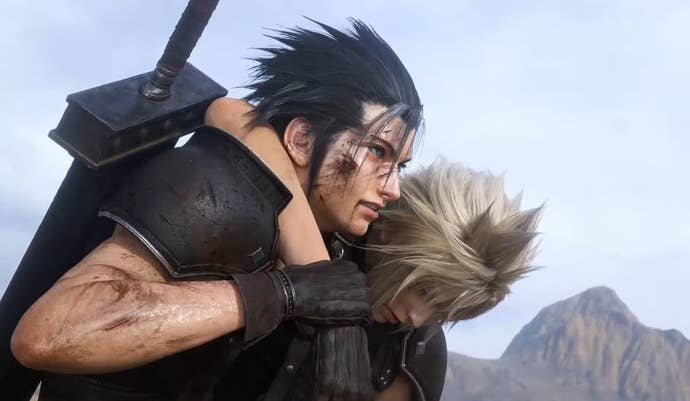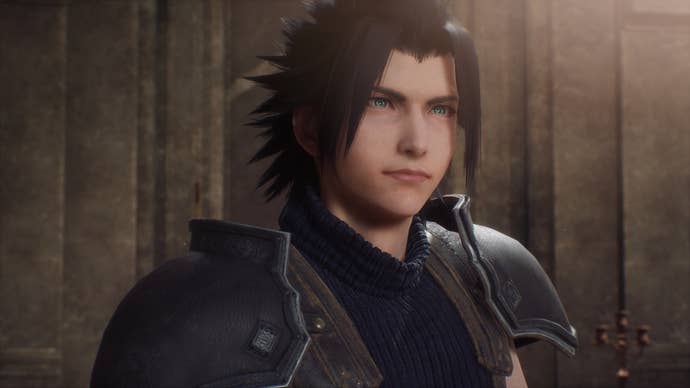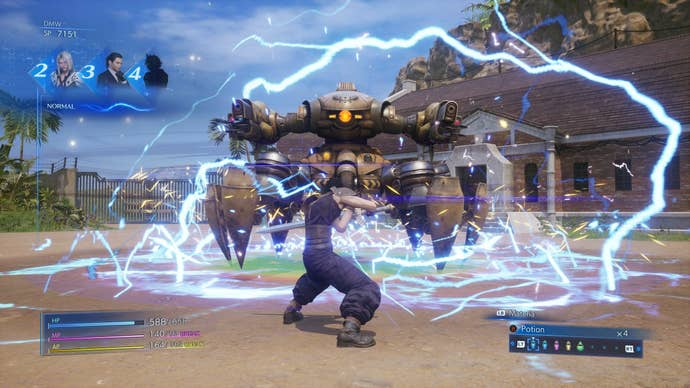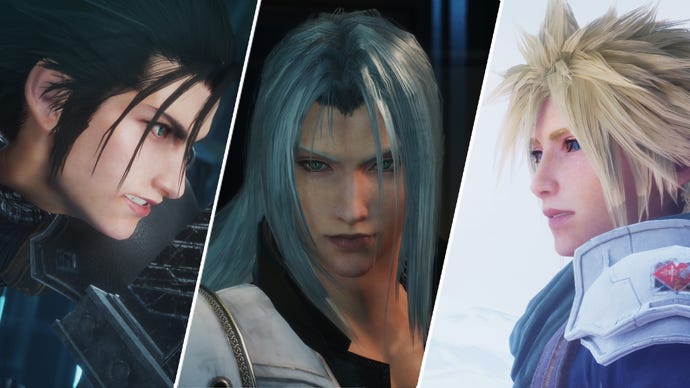Crisis Core Final Fantasy 7 Reunion review: One of the most impressive remasters ever, but still a PSP game at heart
With Final Fantasy 7 Remake reinvigorating the wider compilation, is this once-niche RPG spin-off ready for another shot at relevance?
The marketing for Crisis Core: Final Fantasy 7 Reunion has been a little bit cheeky, for my money. Square Enix has taken to calling this re-release of a PSP classic “more than a remaster”, which feels like a rather liberal interpretation of what this game is – but by the same token, god damn if this isn’t one of the most impressive remasters I’ve ever seen. The best visual remaster ever? Maybe. More than a remaster? Not quite.
So, for the avoidance of doubt, let’s start this review that way: by making clear what the game is. Crisis Core Reunion is a huge visual overhaul of the 2007 PSP game, so significant and overarching that one would be forgiven for thinking this was a ground-up remake. But it isn’t: beneath the hood, beyond the veneer of visuals and character models that have been directly borrowed from FF7 Remake or spec-built to match it, the structure of the game is largely identical.
So, for instance, Crisis Core still features relatively bite-sized play, where all but a few chapters of the game last no more than an hour. Side missions can be accessed at any time from any save point, and there’s over 300 of them to unlock – but these missions are designed to be played on the train in a bite-sized fashion; few last more than a couple of minutes, most feature relatively generic rewards, and all of the 300 missions take place on just a handful of tiny maps, meaning that for side quests you’ll be seeing the same level layouts over and over again.
This was always the duology of Crisis Core, even back on PSP. When it’s recreating and expanding upon story moments alluded to in Final Fantasy 7, it’s a lush project built to stoke excitement in fans. More so than FF7 Remake, certain areas from the original FF7 are recreated here not with broad, general strokes but with painstaking accuracy to the original CG renders. It’s a nostalgia tour-de-force. Attached to all this, however, is the padding necessary to deliver a game with that ambition on PSP without it being about four hours long.

All of that is still present here – which is to say, structurally, this is still very much a PlayStation Portable game, with all the pros and cons that carries. In that sense, Switch or Steam Deck may be the best potential platforms to experience this remaster, as you can engage in the same stop-start play as on its original platform.
Don’t get me wrong, though: the changes are not all visual. This is perhaps where Reunion impresses the most, in fact – in small tweaks to the gameplay systems already in play, all in service of making Crisis Core feel that little bit closer to FF7 Remake.

This means the core moment-to-moment action is snappier and more like an action game, but it also means tweaked mechanics (such as making certain ability skills more effective when ‘comboed’ off normal moves), all-new systems (like a new Buster Sword stance system), and even tweaking the menus to both look like FF7 Remake and be more functional (with things like clear attack stats on offensive equipment, one-button heals outside of battle, and clear information on how much loot there is in each side mission).
All of this stuff adds up to make Crisis Core feel a lot more modern, though there’s a curious effect of that modernization: the current-feeling elements almost serve to make the slightly more out-of-date elements stand out more thoroughly. It’s the same with those character models; the more finessed cutscenes look lucious, if not as intricate as FF7 Remake – but even adding voice to the more simple scenes can’t mask how they’re dead-eyed characters with PSP rigging staring straight ahead, busting out a few canned animations as they natter.
Crisis Core was always a game where some elements of it had and some were decidedly have-not, and the Reunion improvements serve to underline those differences in the boldest of strokes. This even rears its head in the game’s CG scenes: some are brand new, others aren’t, and on PS5 some of the older scenes appeared to have visible compression artifacts, presumably upscaled from whatever Square Enix had available.

I feel like all of this is important to state, not least because of the way Square Enix has positioned the game. There’s the ‘more than a remaster’ chatter. There’s also the name - which ducks being called a HD remaster to instead go with a subtitle not dissimilar to the second part of FF7 Remake, which is called Rebirth. It’s potent marketing, but it’s also the sort of thing that might lead some fans to think that this is more than it is. So, let me say it again: this is still the PSP game at its heart. It is, however, one of the most impressive and ambitious remasterings of an old, classic game that I’ve seen.
As for Crisis Core itself - it’s still potent! I don’t think it’s quite as potent as it was in 2007 - and interestingly, FF7 Remake probably has quite a bit to do with that. The Remake was so deft and intelligent about how it examined the fame and status of FF7 that Crisis Core can’t quite stand up to it, being filled with the tropes and eye-rolling predilections that powered the ‘Compilation of Final Fantasy 7’ throughout the 2000s. Again, that strange axis comes into play here, where how the game has been made to look and feel hugely similar to FF7 Remake serves both to unify the two and underline their differences in equal measure.

Whatever you make of Genesis spouting poetry, everyone and their dog cutting about with a single wing, or even extremely on-the-nose FF7 nods, the game is good. Probably the most jarring thing about it and its story was something that bugged me slightly back in the day – Zack is basically a killer for hire, spending most of the game working for an evil empire. He’s cheerful and chipper as he kills hundreds of Yuffie’s countrymen, then bangs on about protecting his honor. In that sense, he probably gets what’s coming to him, in the end. There’s a more interesting story here, too – but Crisis Core’s straightforward telling of it doesn’t really interrogate what Zack’s complicity in the awful stuff we see in FF7 really means. Then again, this was a theme in the Compilation, too; rehabilitating other mass murderers in the Turks and, to some extent, AVALANCHE itself.
All of this means that, yes, the story is unchanged. There’s no FF7 Remake-style curveball or recontextualizing here. The biggest narrative change, in fact, is new voice recordings for almost all of the game’s dialogue, mostly to bring in the new cast from FF7 Remake. It’s all decent stuff, though I do think I preferred the old Zack. It’s a lovely touch to make the series feel cohesive, however.

But I digress. We’re getting into the Final Fantasy weeds there, and much as I love that, it’s perhaps too hefty a topic for this review. Crisis Core features joyful moments, a gloriously breakable set of RPG mechanics, and a story that at its best is truly gripping.
Repackaged into one of the sharpest Remaster releases I’ve ever seen, it’s a relatively irresistible package - warts and all. The blemishes upon its carefully airbrushed visage are, in many ways, part of the charm. This is a joyous little time capsule of 2000s Square - and perhaps a curious aperitif before Remake part 2. It’s easy to recommend.
Version Tested: PS5, with a copy provided by the publisher.


